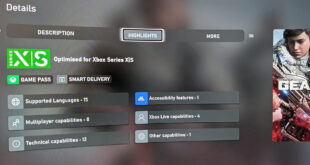Gaming is global. However, there are some regions still perceived as playing catch-up.
Latin America is seen as an emerging gaming market, but to many it’s already arrived. Limitations of internet penetration, small userbases and piracy are all issues that are being quickly overcome. This – coupled with more stable governments, economies and improved retail and communication infrastructures – has meant Latin American consumers have greater confidence and spending powers and gaming is one area where they like to spend big.
Brazil and Mexico are Latin America’s (LATAM) biggest gaming markets. Brazil is now No.1, recently overtaking Mexico, and with an estimated revenue of $1.34bn in 2014, is now the 11th biggest games market in the world.
Even being relegated to second spot at $1.01bn for 2014, Mexico is still bigger than every other LATAM market combined. PC, console and mobile adoption are key drivers for growth in these markets and with a year-on-year growth rate of 14.2 per cent it’s showing no signs of slowing down. To put this into context, the US and Western European markets are forecasted to grow at a combined rate of 1.4 per cebt in 2014 (Newzoo Global Games market research June 2014).
In the ‘West’, games developers and publishers are continually striving to increase retail sales, downloads and profits within their own maturing and saturated markets, and sometimes it can be difficult to see market potential elsewhere.
LATAM consumers no longer tolerate gaming experiences which are not tailored for them. They have money and they’ll spend it where they’re embraced and charmed, not where they’re seen as ‘second class’ customers.
At Synthesis, we’re continually looking ahead to what global games markets are doing and how they’re growing and evolving. We look at what consumers are demanding from their games, what our clients are doing, and how we can help facilitate their business objectives – and LATAM is definitely the right market to be in right now.
We now have two localisation offices in Latin America; one in Rio de Janeiro, Brazil established in 2013 and our second in Mexico City, which opened in April of this year. With local teams and resources, we deliver crafted Brazilian Portuguese and Mexican Spanish localised games and with these languages, we can reach every single market across the South American continent, from central LATAM to the Spanish community in the US.
Brazilian Portuguese, as the name suggests, is different to traditional Portuguese and as such requires a specific localisation and a distinct understanding of cultural and local nuances – we highlighted this last year. But whilst our Brazilian office is perfectly placed, there are 19 other markets to cater for – hence our new office in Mexico.
Spanish is the primary language in LATAM, but it’s not the traditional language you might know. Each country has its own version of Spanish and whilst it obviously doesn’t make financial sense to localise games for every single market, we’ve moved away from the thinking that a traditional EFIGS localisation approach will fit every Spanish-speaking market.
LATAM consumers no longer tolerate gaming experiences which are not tailored for them. They have money and they’ll spend it where they’re embraced and charmed, not where they’re seen as ‘second class’ customers. Language in games is as important as the graphics, sound and storyline. Luckily there is one Spanish language variant which LATAM players accept, and that’s Mexican Spanish.
Spanish is the primary language in LATAM, but it’s not the traditional language you might know. Each country has its own version.
One reason why Mexican Spanish is so widely recognised could be attributed to the popularity of Mexican TV and film productions which are syndicated throughout Central and South America; another could be the influence of the US media in Mexico. Whatever the reason, it’s fortuitous there is an accepted language for multiple markets.
Our most recent projects in Mexico have been for Skylanders: Swap Force and Call of Duty: Ghosts.
Skylanders: Swap Force was a great challenge for us. Players are young children and teens who would get simply get stuck if confronted with expressions they don’t fully understand. Hence, we strived even more to deliver localisation in a language that would maintain all the fun and the subtleties of the original game in English, yet include subtle language and cultural touches easily recognisable by the young players.
The amusing style of the characters’ language was maintained in order to make players appreciate the sense of humour of the various figures. More specifically, the songs and villains’ dialogues were very tricky to localise as we had to maintain the original tone and rhymes. Considering the positive response from the players, we were pleased with the results.
With Call of Duty: Ghosts, the target was totally different but nonetheless equally demanding in terms of adaptation.
War language needs great attention to detail, but it also has to be accesible to the players. It’s not just a matter of using the correct or the most well-known military term, but you need to make each word fit the frantic pace of the action and the “movie feel” of the cinematic sequences.
Both games are massive global IP’s and ensuring players are completely immersed in the experience is paramount. Information, be it verbal or written, should always be immediate and easy to understand, but if a word or phrase is wrong or misspelt, it jars the player. These may seem like small and isolated issues within these massive triple-A games, but it’s the attention to every detail which counts here and we have to ensure that every player gets the same experience regardless of their spoken language.
Information, be it verbal or written, should always be immediate and easy to understand, but if a word or phrase is wrong or misspelt, it jars the player.
However, it’s not just console gaming that is generating growth in LATAM – now it’s online gaming and mobile. Over half of internet users in Brazil are playing online games, with the largest segment of gamers using mobile devices. And in Mexico, mobile is the platform of choice for most online gaming (Ystats.com May 2014). But many developers and publishers of mobile and online games still rely on the EFIGS one-size-fits-all approach.
It’s probably more to do with the fact that a lot of mobile and online gaming is now free-to-play and right now, LATAM players don’t necessarily care about the quality of language. But, as with the Western markets, it’s only a matter of time before these markets become saturated with gaming product and quality of experience begins to matter more to players.
This shift towards quality gaming is evident with both Apple and Google recently announcing the introduction of more powerful operating systems for smartphones and tablets to deliver ‘PC gaming experiences’. Cheaper device costs and wider internet penetration mean that gaming adoption across LATAM will happen very quickly.
So, if it’s only taken just over a decade for Brazil and Mexico to make their huge strides forward, where will their neighbours be in the coming years? Will Chile be the next big market or Colombia or will it be Argentina? Who knows, but what we do know is we can localise games for it – but that’s another tale.

 MCV/DEVELOP News, events, research and jobs from the games industry
MCV/DEVELOP News, events, research and jobs from the games industry



